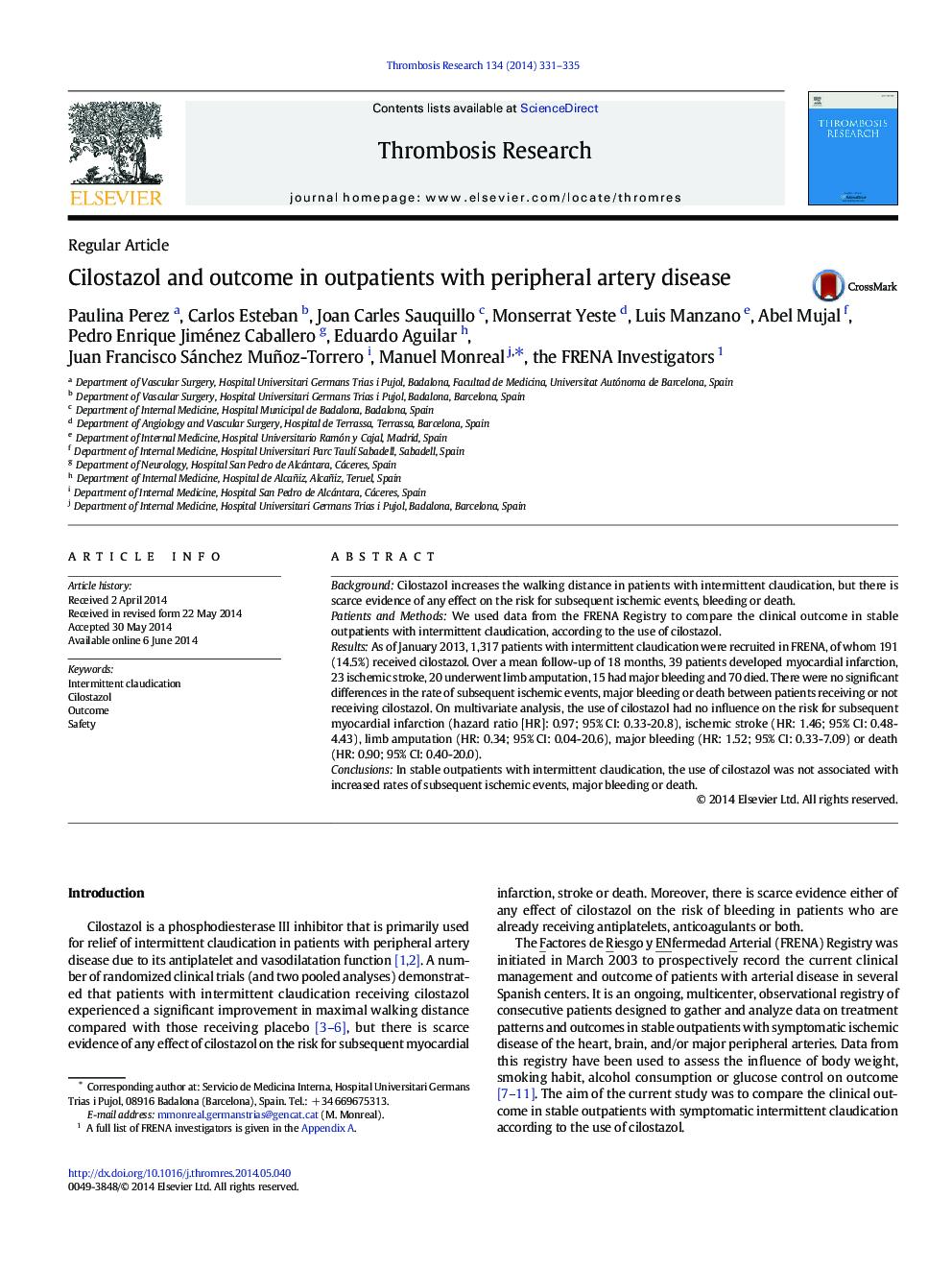| Article ID | Journal | Published Year | Pages | File Type |
|---|---|---|---|---|
| 6002309 | Thrombosis Research | 2014 | 5 Pages |
BackgroundCilostazol increases the walking distance in patients with intermittent claudication, but there is scarce evidence of any effect on the risk for subsequent ischemic events, bleeding or death.Patients and MethodsWe used data from the FRENA Registry to compare the clinical outcome in stable outpatients with intermittent claudication, according to the use of cilostazol.ResultsAs of January 2013, 1,317 patients with intermittent claudication were recruited in FRENA, of whom 191 (14.5%) received cilostazol. Over a mean follow-up of 18Â months, 39 patients developed myocardial infarction, 23 ischemic stroke, 20 underwent limb amputation, 15 had major bleeding and 70 died. There were no significant differences in the rate of subsequent ischemic events, major bleeding or death between patients receiving or not receiving cilostazol. On multivariate analysis, the use of cilostazol had no influence on the risk for subsequent myocardial infarction (hazard ratio [HR]: 0.97; 95% CI: 0.33-20.8), ischemic stroke (HR: 1.46; 95% CI: 0.48-4.43), limb amputation (HR: 0.34; 95% CI: 0.04-20.6), major bleeding (HR: 1.52; 95% CI: 0.33-7.09) or death (HR: 0.90; 95% CI: 0.40-20.0).ConclusionsIn stable outpatients with intermittent claudication, the use of cilostazol was not associated with increased rates of subsequent ischemic events, major bleeding or death.
